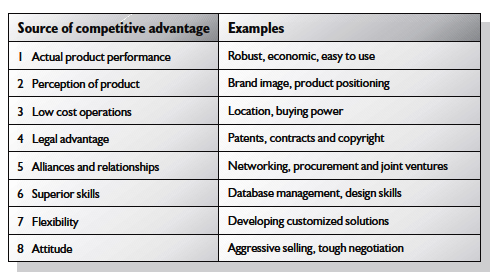Understanding generic strategy. It is possible to consider how general strategy can be translated into specific competitive advantage. A prerequisite to competitive advantage is sustainability. The organisation must be able to sustain its competitive advantage over the long-term.
To be sustainable, the competitive advantage must be:
Relevant
It must be appropriate to current and future market needs. Additionally, it must be relevant to the organisation – achievable within the available resource base.
Defensible
There must be barriers to replication, otherwise success will simply be duplicated by competitors. Such barriers tend to be: (i) Asset-based (tangible factors controlled by the organisation such as: location, plant and machinery, brands and finance); (ii) Skills based (the skills and resources required to make optimum use of the assets. Examples include: quality management, brand development, product design and IT skills.)
Stalemate Industries
Here the potential for competitive advantage is limited. Advantages are small and only a few approaches exist to achieving these advantages. Technological advances are commonly adopted by all industry ‘players’ and we see rapid convergence in product design/performance. Such industries tend to be mature, highly competitive, and often akin to commodity type products where price is the key buying criteria (e.g. manufacturing desktop computers).
Volume Industries
Here are few, but high significant advantages exist. These industries are often capital intensive and are dominated by a few large players who achieve economies of scale (e.g. volume car manufacture).
Fragmented
The market’s needs are less well defined and numerous ways exist to gain advantage. The industry is often well suited to niche player and profitability may not be linked directly to size. Organisations grow by offering a range of niche products to different segments – a multi-segmentation strategy (e.g. computer software).
Specialised
The potential advantage of differentiation is considerable, and many ways exist to achieve this advantage. Profitability and size are not automatically related. Such industries include those developing customised solution to specific problems (e.g. management consultancy) and firms involved in the development/application of innovative technology (e.g. biomedical engineering).
